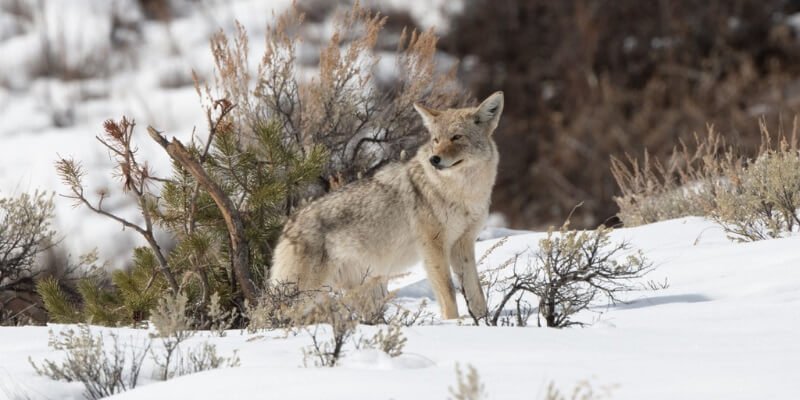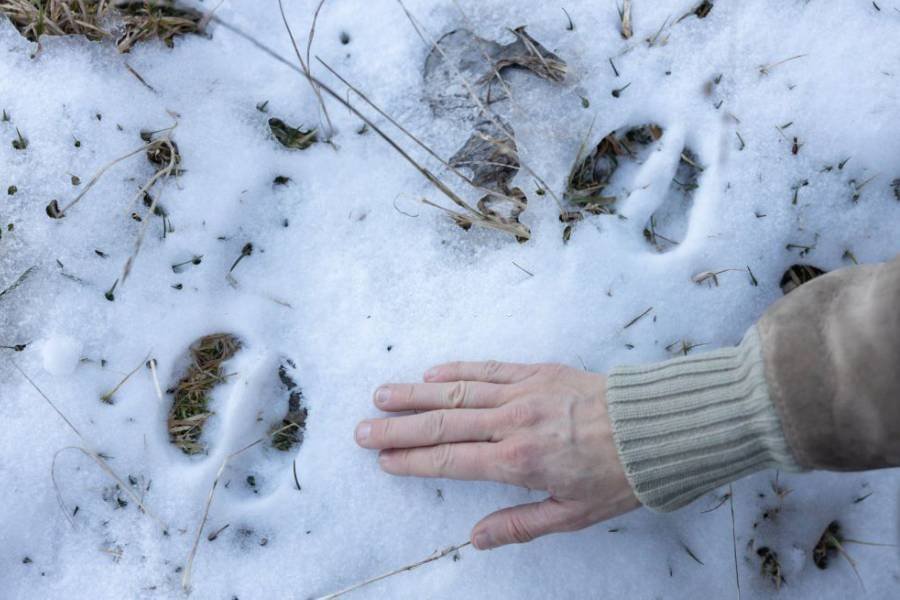
When hiking, we’re quite sensitive to the beauty of nature and its fauna and flora. While it is easy to find the surrounding peaks with a GPS and a good sense of direction, it is more difficult to know how to identify the mother nature around us.
In this article, we will help you identify the different clues that will allow you to discover the wildlife while hiking such as the animals living around you. Also, if you want to start animal photography, this article can help you identify the traces left by animals so that you can find them and take your best photo shots!
How to Discover the Wildlife While Hiking
Let’s see how you can discover the wildlife while hiking in simple steps…
The different animal tracks to be found in nature
The first traces that you will be able to find in nature are, also the most obvious, the footprints of animals. However, not all seasons are suitable for observing animal footprints.
If in the snow or in the mud, you will easily come across tracks. It will be harder or even impossible to find them in summer on dry ground. Winter hikes in the snow offer you splendid landscapes, which allow you to observe the local fauna!
You will then have other clues that you can find all year round:
- The traces of meals: whether it is a cone, hazelnuts or even an animal carcass, there are all traces and clues that will allow you to discover the presence of animals. The way in which the cone or the nut was eaten, and the size of the prey will be all elements allowing to project on the animal species possibly present.
- The droppings: these will be easily visible and recognizable clues that allow you to discover the presence of animals in the vicinity. Here the shape and the size will be key elements.
- The places of life: burrows, nests, and roosts will also be important elements in the search for animal presence.
- The traces of passage: a ball of hair, a ball of dejection or the traces left on a tree by claws, horns, teeth, or antlers will be clues not to be overlooked during your research.
- The sounds: we will obviously think of the song of birds that we will easily hear but mammals too can warn you of their presence.
If you want to observe animals or discover the surrounding fauna, you have to be attentive to these different clues to stay curious and alert. Don’t hesitate to take pictures of these different traces to help you identify them and orient yourself to the species that may be present.
Animal footprints: the fundamental clue
If you are lucky enough to come across animal tracks, the animal footprint is an essential clue that will allow you to know to which animal family this track may belong. For example, you can easily recognize the trace of a bird’s foot in the snow that has come to peck an insect or a seed on the ground.

First of all, we’ll be interested in the footprints of mammals that can be classified into 3 very distinct families. The interest in observing the footprint is that it will give us an idea of the size of the animal. It will allow us to know in which direction it was moving, its pace, and the time since which it passed. That way, we can find out easily if he was alone or in a group. So it is an important element to understand what is happening around us!
Plantigrade animals
Plantigrade species, like humans, walk on the soles of their feet. This is particularly the case of bears, hares and rabbits, badgers, weasels, hedgehogs, marmots and squirrels. With the peculiarity of these animals and the footprints they leave, we can easily distinguish the 5 fingers.
For some species, the claws of each finger can give us an additional clue about the animal we are observing.
Digitigrade animals
Natural evolution requires animals that are taken to move quickly have learned to place the weight of their body on the front of their legs to walk on their toes. This family includes canids (wolf, fox, dog, etc.), and felids (lynx, cat, etc.) but also birds that can easily be seen in the wild.
The movement of these animals on the forefoot allows them to move more quickly and more silently whether it is to hunt their prey or on the contrary, to escape their predator.
We will find on these prints 4 fingers as well as a finger pad on the back.
Unguligrade or ungulate animals
Finally, in the next stage in animal evolution, these are the animals that have seen their fingers weld together and which move on their nails. In this family, we will find chamois, roe deer, wild boar, stag and mouflons. These animals also have very characteristic and easily identifiable footprints.
Conclusion
You now have the keys to go in search of animals and are able to discover the wildlife while hiking. With this foundational understanding, you will be equipped to navigate any environment you encounter during a hike. Don’t hesitate to be curious to take pictures, and exchange with enthusiasts or professionals in the sector to deepen your knowledge and learn to discover the nature that surrounds you.
See Also…